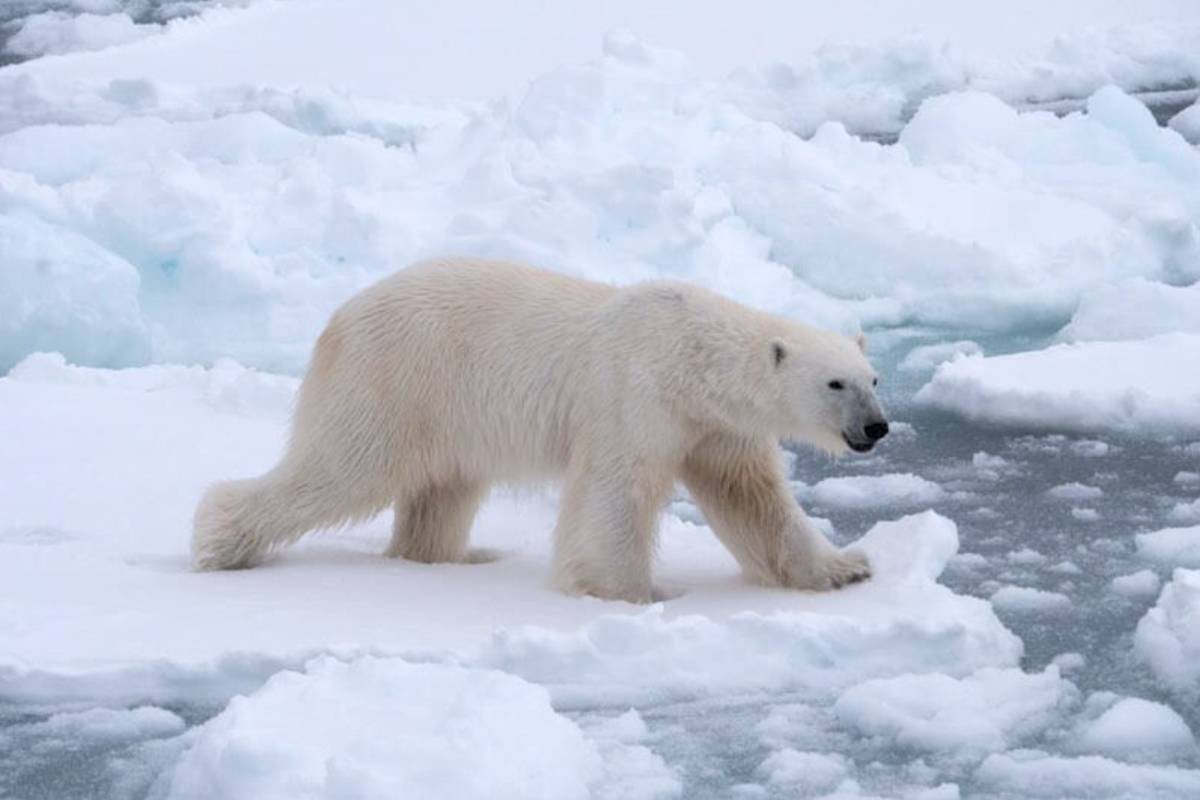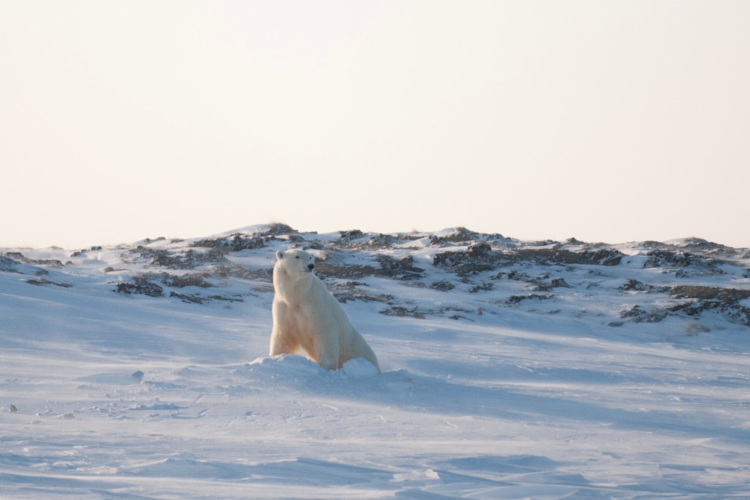It’s spring! For many people, that means warmer weather, more time outside, and maybe some pesky spring allergies. But for polar bears, spring means mating. Mating season can vary slightly based on the polar bear population, but it typically lasts from March to May, with the peak around late April, although it can also continue through June, and possibly longer.
Polar bears are largely solitary animals, but when spring rolls around it's time for males to start scouring the sea ice, looking for females. When a male polar bear finds a female to mate with, usually by following a scented trail, it’s not uncommon for another male to be nearby, which can lead to some pretty hostile competition between males.
Size matters
Polar bears have a polygynous mating system, which means that males will mate with multiple females and that their mating system is driven by sexual competition between males. Animals with polygynous mating systems typically display sexual dimorphism, or different characteristics between sexes, where males are larger than females. Polar bears meet this expectation; a male can be 2-3 times the size of a female.
The polar bears' polygynous mating system also explains why, when bears in the wild have been observed during mating season, males in mating pairs are larger and older than males not observed with a female. Females view the larger, more dominant males as preferred mates, so bigger males receive more mating opportunities. For male polar bears, age is the most important factor in their ability to access females. This is likely because age is closely tied to body size, and we can assume it is also tied to their ability to compete against other males.
Cuts, scars, and broken canine teeth are common signs of mating competition between males. Even though males are capable of reproducing at age 3, injuries from battles over females don’t appear until age 6, suggesting that males don’t seek out mating opportunities until they are older and more physically capable of competition. Competition injuries also appear to drop off as a male polar bear ages, which suggests that older males reach an age where threats and displays of dominance are enough to reduce their need to actually fight. Eventually they reach a point where they’re just too old to bother.
Female receptiveness
Males do the work of searching out females, but females indicate their readiness to mate through physiological signals, like releasing scent cues from foot pads and genital swelling. When a female polar bear has cubs, those cubs stay with her for about 2.5 years, and the female will not be receptive to mating during this period. A female with cubs will not exhibit the same physiological signals that a lone female or a female in a mating pair exhibits; males can read these signals to identify which females to pursue.
Spring is an important time for polar bears. Their reproductive timing is an essential aspect of their ability to thrive as a species. After mating occurs, female bears with newly fertilized eggs will have to hunt and put on as much fat as possible so they can give birth to healthy cubs come winter.
For more on mating behavior in polar bears, read this fascinating account by Dr. Ian Stirling. It describes the complete behavioral sequence of a mating pair of polar bears, observed in the Canadian Arctic in 1997.
Dr. Brooke Biddlecombe is a biologist at Environment and Climate Change Canada working on management of Canadian polar bear populations.
Related Paper
Biddlecombe, B.A., Derocher, A.E., Richardson, E., and Stirling, I. 2019. Behavior and characteristics of mating polar bears (Ursus maritimus) in the Beaufort Sea, Canada. Polar Biology 42: 919-929.

















